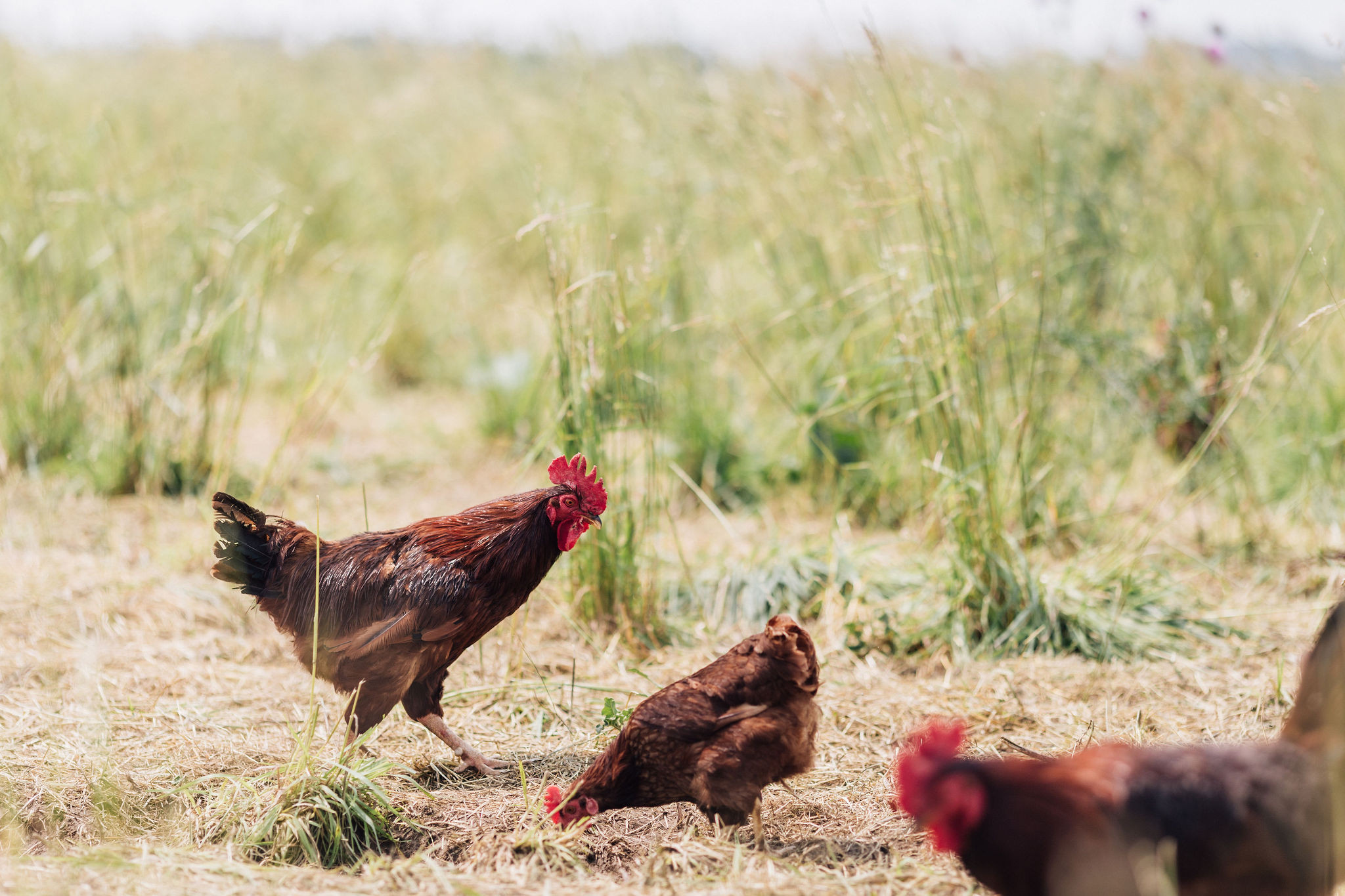Our unique beef - the best of both breeds
posted on
August 10, 2017
We currently have 6 beef cattle on the farm. Once butchered, that will be about 2,200 pounds of boneless trimmed beef. Wow! That’s a ton of food for our members... literally.
Our beef cattle are a bit different than other beef cattle, giving them a distinct and unique flavor. Here’s why. In regard to breed, our dairy cows are 80% Jersey and 20% Jersey crosses. We let them naturally take to our Jersey bull. However, if there is a dairy cow that is not taking to the bull for one reason or another, we will use artificial insemination with sperm from an Angus bull. The calf will be an Angus-Jersey cross and will be raised for beef.
Most beef cattle are of the Angus breed. Angus cattle were specifically bred from indigenous cattle in Scotland. They are known for a pitch-black hide, fine marbling of fat, being reliably tender, and for growing quickly. Jersey cattle are typically not preferred by farmers because they take longer to raise and do not grow as large as Angus cattle. On the other hand, many have reported that the flavor of Jersey cattle is fantastic and that the fat is a lovely yellow color, indicating a high nutrient content from eating grass. By creating an Angus/Jersey cross, we add dimension to the taste and nutrient content of our beef not found elsewhere. We get the best of both breeds.
Our beef cattle live alongside our dairy cattle. They eat the same diet of fully grown grass and live the same actively pastured lifestyle. The only difference is that they do not go into the barn for milking.
Our farmer waits until the cows are 2-3 years old before butchering. He knows that it’s time when the cow’s backbone is not visible and covered with healthy fat. Ample fat is an indicator that the meat will be flavorful and delicious (FYI, yellow fat indicates that the cow was grass-fed, and white fat indicates that the cow was grain-fed).
I like to buy beef bundles from the farm. It’s simply more economical for my family. This summer, my family has been enjoying Steak Bundle 2. I’ve been prepping the steaks with salt and pepper about an hour beforehand and grilling to medium rare. My favorite sides to serve with steak are roasted chemical-free potatoes, sautéed kale and garlic, quinoa cooked in bone broth, and steamed green beans with a dollop of salted butter.




